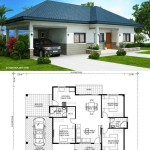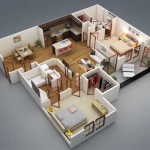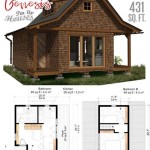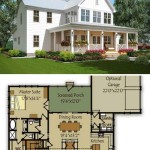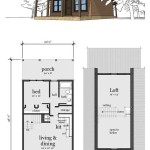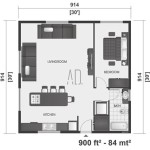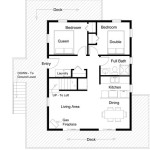Single Floor House Plans: 4 Bedroom Options
Single-story living offers a multitude of benefits, from enhanced accessibility to simplified maintenance. For families seeking ample space, four-bedroom single-floor house plans provide comfortable living without the need for stairs. This article explores key considerations and popular design elements for those seeking a spacious yet manageable single-level home.
Space Optimization and Flow
Maximizing space and creating a seamless flow are critical in single-floor, four-bedroom homes. Open-plan layouts are a popular choice, combining the kitchen, dining, and living areas into a single, spacious zone. This design fosters a sense of connection and encourages interaction among family members. Strategic placement of hallways and doorways can further enhance the flow and minimize wasted space. Careful consideration of furniture placement within the open plan is crucial to avoid a cluttered or disjointed feel. Defining zones with rugs, varied lighting fixtures, and changes in ceiling height can maintain a sense of separation while preserving the open concept's benefits.
Another consideration for space optimization is minimizing circulation areas like hallways. While hallways are necessary for privacy and access to bedrooms, thoughtful design can reduce their footprint. L-shaped or U-shaped layouts can sometimes minimize hallway space while still providing separation between public and private areas. Grouping bedrooms together in a wing or cluster helps consolidate plumbing and HVAC runs, potentially reducing construction costs while also enhancing privacy.
Privacy Considerations in Single-Level Layouts
Maintaining privacy in a single-story home requires careful planning, particularly with four bedrooms. One effective strategy is to strategically position the bedrooms. Separating the master suite from the other bedrooms by a hallway, bathroom, or common living area creates a buffer zone and enhances privacy. Consider placing the master suite on one side of the house and the other bedrooms on the opposite side, creating a natural separation. Another approach involves creating a dedicated children's or guest wing, isolating these rooms from the main living areas and the master suite.
Soundproofing is another essential factor in ensuring privacy. Investing in quality insulation between walls and floors can minimize noise transfer between rooms. Solid-core doors and double-paned windows further reduce noise transmission. Properly sealing any gaps or cracks around doors and windows also contributes to a quieter and more private environment. Thoughtful landscaping strategically placed trees and shrubs can also screen the house from neighbors and street noise, enhancing the sense of seclusion.
Outdoor Living Integration
Single-floor homes are uniquely positioned to seamlessly integrate indoor and outdoor living spaces. Patios, decks, and porches can become extensions of the interior living areas, expanding the usable space and providing opportunities for relaxation and entertainment. Large sliding glass doors or folding doors blur the lines between indoor and outdoor spaces, creating a sense of continuity. Positioning the main living areas to face the backyard or garden maximizes the view and access to natural light.
Consider incorporating outdoor amenities that complement the home's design and the family's lifestyle. Outdoor kitchens, fireplaces, or fire pits create focal points and extend the functionality of the outdoor living space. Covered patios or pergolas provide shade and protection from the elements, allowing for year-round enjoyment. Careful landscaping, including strategically placed trees, shrubs, and flower beds, enhances the visual appeal and creates a sense of privacy.
The design of the outdoor space should complement the architectural style of the house. For example, a modern home might feature a sleek patio with minimalist landscaping, while a traditional home might have a more ornate porch with a lush garden. Consider local climate conditions when planning outdoor living spaces. In hotter climates, covered areas and shade structures are essential, while in cooler climates, fireplaces or fire pits can extend the usability of the outdoor space into the colder months.
Choosing a single-story, four-bedroom house plan requires careful consideration of space optimization, privacy, and the integration of outdoor living areas. By addressing these key aspects, individuals can create a comfortable and functional home that meets their unique needs and lifestyle.

Contemporary Plan 4 211 Square Feet Bedrooms 5 Bathrooms 5565 00151

Pin Page

Minimalist Single Story House Plan With Four Bedrooms And Two Bathrooms Cool Concepts

One Story 4 Bedroom Farm House Style Plan 8817

4 Bedroom House Plan Examples

Archimple 4 Bedroom House Plans Single Story Choose Your Dream Home

House Plan 201024 Single Story 4 Bedrooms 2 5 Bathrooms Floor Instant Custom Plans Service

Pin Page

Four Bedroom One Story House Plan 82055ka Architectural Designs Plans

Peace And Quiet House Plan One Story Modern Home Design Mm 2316

